9.2 Formatting Technical Documents
Robin L. Potter
About Formats
- Signal the level of formality
- Set expectations about the message and purpose of the document
- Help to create a degree of standardization in the documentation circulating within and outside of organizations
- Inform readers on how to read the document
The next unit of this text discusses the types of technical reports and their typical usage and contents. In this chapter, we will discuss their formats—that is, how they are prepared so as to conform to workplace conventions. Included in our overview are:
- Short reports
- Long reports
- Slide reports
- Infographics
Before we discuss the various types of reports, consider the misconceptions and variations between formal and business reports by viewing the following video:
(Formal and Informal Reports, 2020)
Short (or Informal) Reports
Short reports, also known as informal reports, are routine documents of two to 10 pages or so in length that focus on one specific topic–such as an investigation, brief proposal, progress, or other subject that requires more development than would be suitable for a piece of correspondence. Such reports can be formatted either as memos or email reports for internal purposes. They can also be formatted as letter reports when conveyed outside the organization. An email report consists of a report that is composed inside the email message box. Both memo and letter reports are usually attached to transmittal email messages for rapid electronic delivery.
The video, Guidelines for Writing Short Business Reports (2019), offers some insights into the strategies of writing short reports.
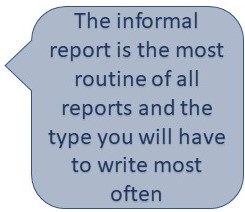
The informal or short report can be informational or analytical in nature. The informational technical report contains detailed non-sensitive, routine technical information. When it is of a highly routine nature, like a weekly activity report, it is formatted as a fill-in-the-blank form. The conventional structure of a short report otherwise consists of an introduction, background, findings, and conclusion. In contrast, the short analytical technical report seeks to answer questions about specific problems with the aim of solving those problems. How can we incorporate sustainability into our electrical use? Should we close or open a new plant? How can customer service be improved? Therefore, the short analytical report not only includes an introduction, findings, and conclusion, but also often recommendations.
Table 9.2.1 Informational and Analytical Short Report Sections
Short Informational Reports
|
Short Analytical Reports
|
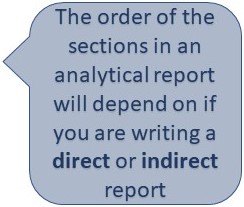
Formal Reports
Informal Reports Types and Functions
As you encounter the many activities, duties, and responsibilities involved in your career, you will find that different types of short reports can be used respond to the various communication situations that arise. Table 9.2.2 below provides an overview of numerous types of short reports and their functions.
Table 9.2.2 Types and function of informal reports (Smith, et al., n.d.).

You will find more detailed information about writing proposals, progress and recommendation reports in the next unit. Each of these reports can be written as short or long reports. You can view examples of several types of short reports, including conference, progress, summary, and recommendation reports, by visiting Venecia Williams’ Chapter 12: Report Writing Situations in The Fundamentals of Business Communication, which offers examples drawn from both business and technology.
LLMs can assist in drafting a short report, though again keep in mind that a chat tool will not have the important contextual information that only you would have and that unless you are using specific LLMs like OpenAI’s ChatGPT, the claims, citations, and references would need corroboration. More about using LLMs in upcoming chapters.
Formal Reports
Formal technical reports, also known as long reports, are documents that consist of about 10 or more pages in length. These reports not only offer a detailed discussion of technical research findings but are also used to make complex decisions. Examples of these reports include investigation, proposal, recommendation, problem-solving, feasibility, audit, and compliance reports. Such documents can be circulated inside or outside an organization, with the transmittal document being formatted as a memo or letter to signal the document’s internal or external destination. The following video, Writing Long Reports (2019), provides and comprehensive overview of the long report.
Since formal reports are lengthy documents, they are accompanied by additional components consisting of the front and back matter that serve to aid the reader in understanding the document and locating information. The components of a formal report are listed below in Table 9.2.3. You will notice that the report format consists of three sections: the front matter, with the cover page, table of contents, and executive summary; the report, with the introduction, background, details, and conclusion/recommendations; and the back matter, consisting of the references and the appendix/appendices.
Table 9.2.3 Components of a formal report (partially adapted from Cruthers, 2020).
|
Element |
Description |
|
Front Matter Title page |
Report title; date of submission; name, title, and organization of the person who prepared the report; name, title, and organization of the person receiving the report. If your report contains sensitive information, the cover page should indicate the level of confidentiality. In addition, if it is a printed version that is going to be exposed to the elements, it might also contain a cover. No page number. |
|
Table of contents List of tables and figures |
A list of the sections in the report and their respective page numbers.
Below, add a list of tables and figures, consisting of the number, caption, and page number. This page is not labelled with a page number. |
|
Abstract or executive summary |
The abstract or executive summary is a one-page overview of the entire report. It discusses the implications of your report: basically it covers in brief what managers or other people who have authority need to know. Summarize the topic, methods, data/evidence, results, and conclusions/recommendations. Place on its own page. Label as page iii; note the use of Roman numerals for all front matter except for the title page and table of contents. |
|
Report Introduction |
Introduces the topic of the report, states the purpose of the report, and previews the structure of the report. This section often contains similar information to the Executive Summary, but in a clear, factual manner. Begins on a new page. Label as page 1. |
|
Background
|
Discusses the circumstances or context relating to the subject matter of the report. Explain the research rationale and methods. |
|
Details/findings |
Key elements of the report body may include the findings, results, and analysis or discussion. Includes research evidence. Uses descriptive or functional headings and sub-headings. Pagination continues from the introduction. |
|
Conclusion and/or recommendations |
Concise conclusion based on findings. May or may not include recommendations, depending on the context and report purpose. Pagination continues from the body of the report. |
|
Back Matter References |
A list of all references used in the report. All in-text citations included in the report should have an accompanying entry in the reference list. Begins on a new page. Pagination continues from the conclusions and/or recommendations. |
|
Appendix or appendices |
Related supporting materials. All materials in the appendix (or appendices) must be referred to in the body of the report. Only one item per appendix. Each appendix begins on a new page, is labelled as Appendix A, B, C, etc., and is given a title. Pagination continues from the reference list. |
For information on how to create and paginate the front and back matter and how to format the contents to achieve optimum readability, please refer to A Guide to Writing Formal Technical Reports (University of Victoria, Last, & Potter, 2021). You will find samples of formal reports from several technology disciplines on the OACETT website.
You can work with an LLM to draft the contents of your formal report. The key is to have a solid outline upon which your work with the LLM can be based. While the LLM will not create a table of contents unless you upload a completed report (check with your organization’s privacy policy first), it can be a helpful collaborator as you develop the various parts: introduction, background, details/findings, and conclusion. More on developing an outline using an LLM in Unit 10.
Slide Reports
Slide reports are visual documents that are meant to be read, not presented, are created using PowerPoint or other slide deck software, and are a genre of slide documents (or slidedocs). Nancy Duarte, a leader in presentation skills education and author of Slidedocs (2016), coined the term after noticing how PowerPoint was being used to create documents other than presentation slide decks. In technology, slide reports have been used for the following purposes: definitions and descriptions, explanations, guides, instructions, tutorials, and report previews or summaries (Potter, 2020).
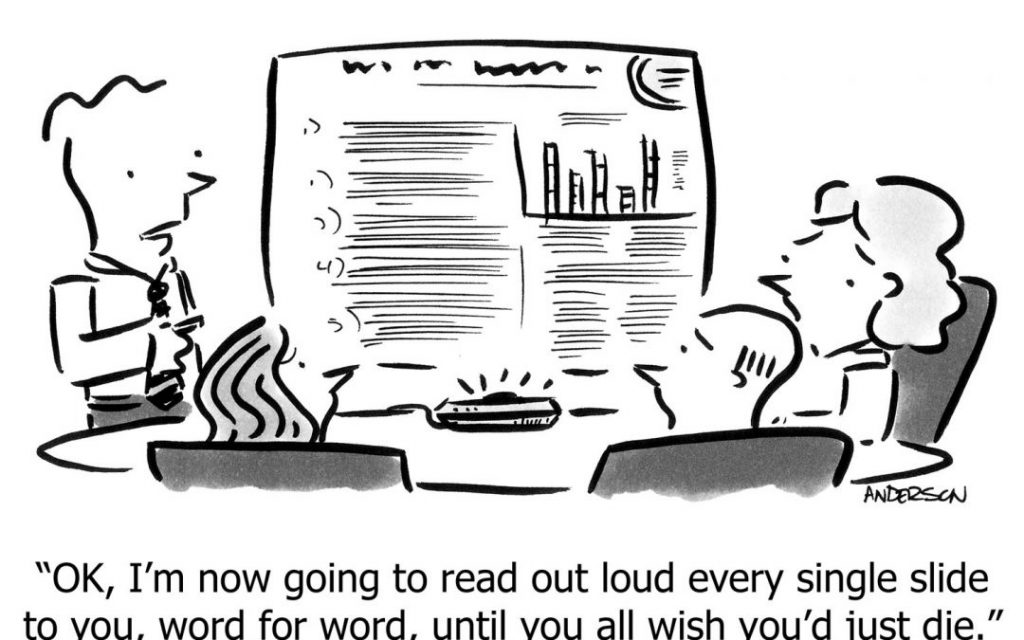
Slide reports are full reports that include a title page, table of contents and list of tables and figures, a glossary (if needed), section or chapter guides, a list of references, and appendices (if required). While they offer full-text development of ideas, they bridge genres by resembling presentations in the ample use of visual content to amplify ideas, set context and atmosphere, and support and clarify ideas. These are typically visually engaging documents, with content developed in “bite-sized” segments for quick reading on the go. See the example of page design options in Figure 9.2.2.
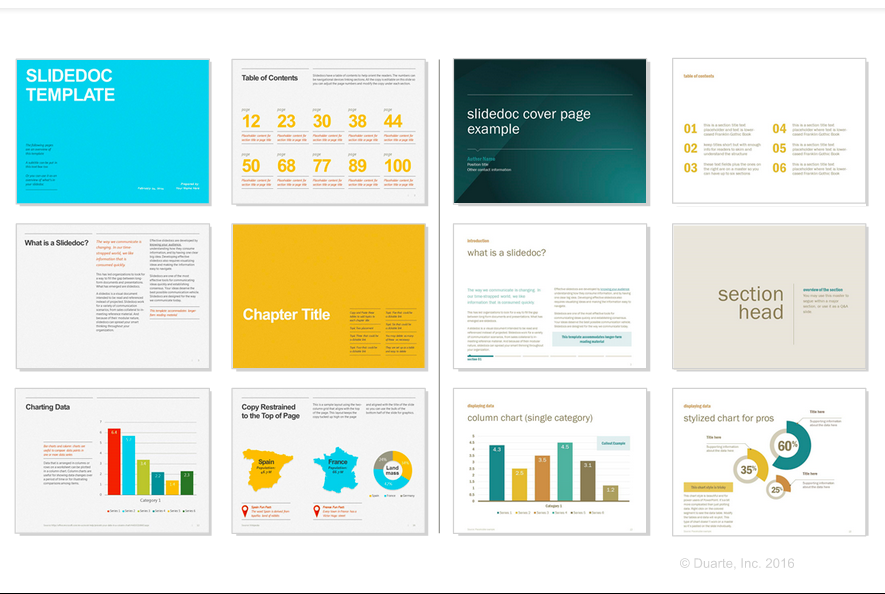
In the video below, Nancy Duarte provides some tips on designing slide decks.
Characteristics of Technical Slide Report Design
- Headings, subheadings
- Enhanced appearance through the use of color and font styles
- Generous use of purposeful visual aids and visual information
- Full paragraph development using short paragraphs
- Information chunking into short sections
- One idea per slide (recommended)
- Parallel listing for items in a series
- Pull quotes to highlight key points
- Section guides for longer reports
- Section overviews set below headings
To view an example of a technical slide report, see Elite Electronics Inc.’s Guide to FCC Certification for Part 15C Wireless Transmitters.
See Figure 9.2.3 for an example of a slide report page. Unlike a slide presentation, this sample page contains a considerable amount of text–which indicates that the report is not meant for presenting, but for reading. Notice how a large amount of text has been rendered readable through the use of a column format using short paragraphs. Notice also how a meaningful chart is integrated using colour that aligns with the slide design element. In addition, note how the page guide is included at the bottom of the slide; it helps the reader become quickly oriented as to the topic under discussion.
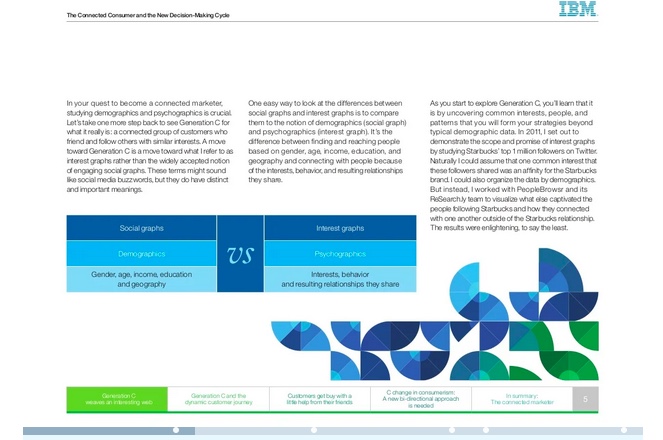
Knowledge Check
 |
 |
 |
Slide reports can be developed through the use of AI-assisted text and design within certain platforms. While Copilot will not create a slide deck, other platforms do. For example, PowerPoint connects with a ChatGPT tool that will help you develop content and offers a design tool that will suggest auto-designed slides. Gamma and Canva employ artificial intelligence to automatically suggest text and slide design. You can upload your own content to Canva, and/or make use of Magic Writer to add to or revise it. With Gamma, you can upload a file and it will use that text to automatically create designed slides.
Whichever tool you use to design your slide report, be reminded that you are responsible for content accuracy, completeness, and relevance. It may be more time-efficient to develop the slide report contents yourself, using the outlining and report prompting strategies discussed above. Once you have content that is satisfactory, then you can begin to upload it to a slide deck software.
Infographics
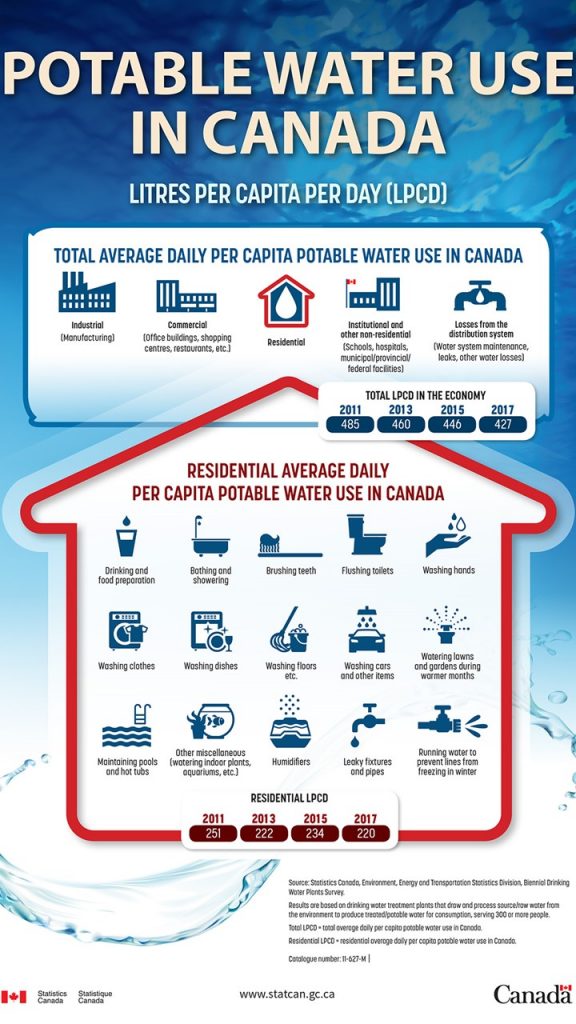
Infographics are reports that look like posters. They are created with digital templates or slide deck software to report information using visual narratives or stories. Infographics combine visual elements like icons, graphs, images, and/or charts, along with concise text, to promote an idea or to convey information in an engaging way. Software such as PowerPoint, Adobe Express, or Canva can be used to create infographics.
If you are seeking one specific type of format for infographics, you will be disappointed. Here, you can let your creative side flourish as you customize backgrounds, fonts, and formats to suit your subject and purpose. Some software, like Canva, offers free and premium ready-made templates that you can adapt to your own content. The key is to have done your research, mapped or sketched out your ideas, and planned the visuals you will be using to support them. Once you have done this, go into the software and design your document using a variety of background, font, and chart options. Some infographic software like Canva will have AI tools like Magic Writer which can be used to assist in generating content. It is always better to use your own material, but Magic Writer can assist you in supplementing content when needed.
When creating an infographic choose a template that aligns with your content. For example, if you are showing data related to geographic areas, choose a map template; if you are making a comparison, choose a two-column format. Below are three examples of infographics. Note the sparse use of text, which offers only key information, and relevant images to highlight key ideas.
Pictorial infographic example (as shown above): Potable Water Use in Canada (Statistics Canada, 2019).
Map infographic example: An Overview of Canada’s Forest Sector (Statistics Canada, 2018).
Text-based infographic example: What is radioactive waste? (Canadian Nuclear Safety Commission, 2017)
(What Makes and Effective Infographic, 2018)
Seneca Polytechnic offers many resources for learning about infographics. You might want to consider completing the Seneca Sandbox’s Creating Infographics tutorial or signing up for a webinar to learn more about how to create effective infographics.
Knowledge Check
A Checklist for Effective Reports
Here is a checklist for ensuring that a report fulfills its goals:
- Report considers the audience’s needs
- Form follows function of report
- Format reflects institutional norms and expectations
- Information is accurate, complete, and documented
- Information is easy to read
- Terms are clearly defined
- Figures, tables, and visual components support written content and so are purposeful
- Figures, tables, and visual aids are clear and correctly labelled
- Figures, tables, and visual aids are easily understood without text support
- Words are easy to read (font, arrangement, organization)
- Results are clear and concise
- Recommendations are reasonable and well-supported
- Report represents your best effort
- Report speaks for itself without your clarification or explanation
Parts of the content on informal reports have been partially adapted from Smith, J., Bartsiokas, T., & Hylton, T. (n.d. ) Report type and function: Informal report. Communication at work. https://kpu.pressbooks.pub/communicationsatwork/chapter/report-type-and-function-informal-report/
References
An overview of Canada’s forest sector. (2018, May 8). Statistics Canada. https://www150.statcan.gc.ca/n1/pub/11-627-m/11-627-m2018008-eng.htm
Bovee, C., Thill, J., & Scribner, J. (2016). Business communication essentials (4th ed.). Toronto, ON: Pearson Canada Inc. http://www.pearsoncanada.ca/highered/product-showcase/new-solutions-for-core-foundations-from-pearson-canada/business-communication-essentials-fourth-canadian-edition-4e
Canadian Nuclear Safety Commission. (2017, December 8). What is radioactive waste? Government of Canada. https://www.cnsc-ccsn.gc.ca/eng/resources/infographics/waste/index.cfm
Canva. [Sample Infographic Templates]. (n.d.). https://www.canva.com/
Cruthers, A. (2020). Organizing reports. Business writing for everyone. https://kpu.pressbooks.pub/businesswriting/chapter/organizing-reports/
Duarte, N. (2016). Slidedocs. https://www.duarte.com/slidedocs/
Elite Electronics Engineering. A guide to FCC certification for 15C wireless transmitters. OVERVIEW PDF.
GreggLearning. (2019). Guidelines to writing short business reports [Video]. Youtube. https://www.youtube.com/watch?v=TW-1aan4nFs
Guffey, M., Loewry, D., Rhodes, K., Rogin, P. (2016). Business communication: Process and product (5th ed.). Toronto, ON: Nelson Education. Retrieved from http://www.cengage.com/cgi-wadsworth/course_products_wp.pl?fid=M20b&product_isbn_issn=9780176531393&template=NELSON
Lumen (n.d.). Informal reports. Business communications skills for managers. https://courses.lumenlearning.com/wmopen-businesscommunicationmgrs/chapter/informal-reports/
McKinney, M. (2020). Formal and informal reports. Video. Lynda.com. https://youtu.be/1dIStGBff3A?si=SnKEknxfnAWoeNsb
Meyer, C. (2017). Communicating for results (4th ed.). Don Mills, ON: Oxford University Press. https://oup-arc.com/access/meyer-4e-student-resources#tag_case-studies
Potable water use in Canada. (2019, June 11). Statistics Canada. https://www150.statcan.gc.ca/n1/pub/11-627-m/11-627-m2019022-eng.htm
Potter, R.L. (2020). Slide reports. Robin L. Potter: Artwork and Writing. robinlpotter.com/writing
Seneca Libraries. (n.d.). Library & information technician: Create websites and infographics. Seneca Polytechnic. https://library.senecacollege.ca/lit/websites_infographics
Seneca Libraries. (n.d.). Writing and Communicating Technical Information: Home. Seneca Polytechnic. https://library.senecacollege.ca/technical
Seneca Sandbox. (n.d.). Creating infographics. Seneca Polytechnic. https://sites.google.com/view/creating-infographics/creating-infographics
Smith, J., Bartsiokas, T., & Hylton, T. (n.d. ) Report type and function: Informal report. Communication at work. https://kpu.pressbooks.pub/communicationsatwork/chapter/report-type-and-function-informal-report/
Solis, B. (2015, March 26). The connected consumer and the new decision-making cycle. SlideShare. https://www.slideshare.net/briansolis/the-connected-consumer-and-the-new-decisionmaking-cycle-46336230
Stanford Graduate School of Business. (2014). Nancy Duarte: How to create better visual presentations [Video file]. https://www.youtube.com/watch?v=so9EJoQJc-0
Statistics Canada. (2018, May 8). An Overview of Canada’s Forest Sector. Infographic. https://www150.statcan.gc.ca/n1/pub/11-627-m/11-627-m2018008-eng.htm
Statistics Canada. (2019). Potable Water Use in Canada Infographic. https://www150.statcan.gc.ca/n1/pub/11-627-m/11-627-m2019022-eng.htm
Triggs, M. (2017). Powerpoint is ruining your presentation. The Presentation Maestro.
University of Victoria, Last, S., and Potter, R. L. (n.d., 2017, 2021). A guide to writing formal technical reports: Content, style, format. Original document by University of Victoria (n.d.). Engineering work term report guide: A guide to content, style and format requirements for University of Victoria engineering students writing co-op work term reports. (Updated by Suzan Last, October, 2017 and adapted by Robin L. Potter, 2021). OER.
Williams, V. (XX). Chapter 12: Report Writing Situations. In The Fundamentals of Business Writing. https://pressbooks.bccampus.ca/businesswritingessentials/chapter/chapter-14-routine-report-writing-situations/

